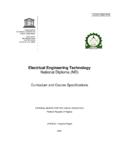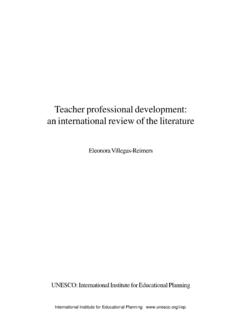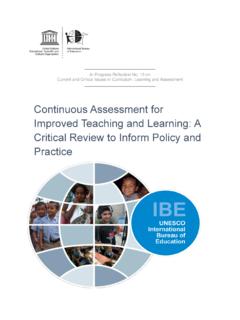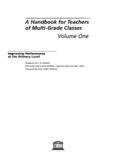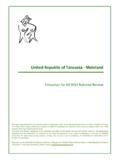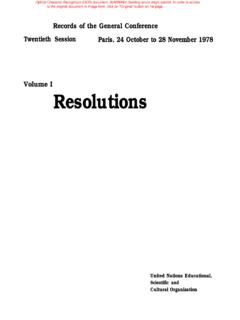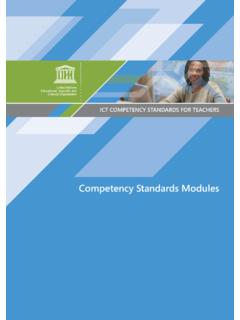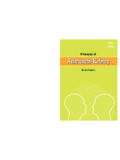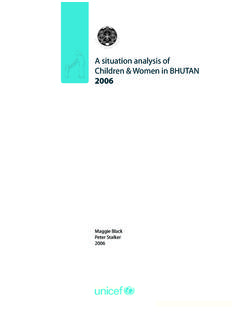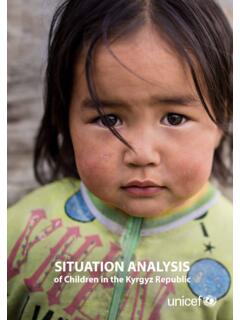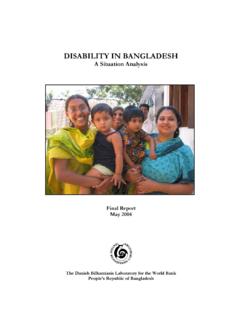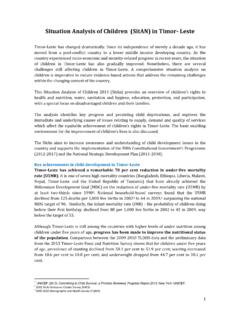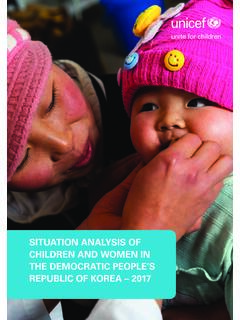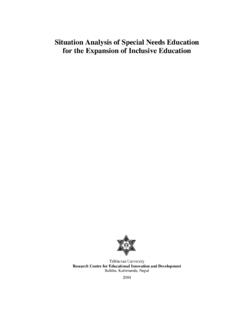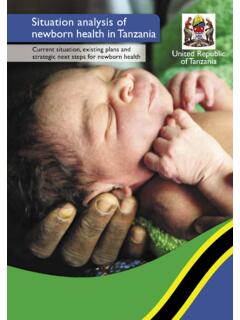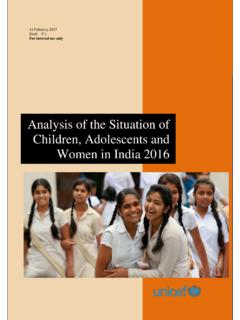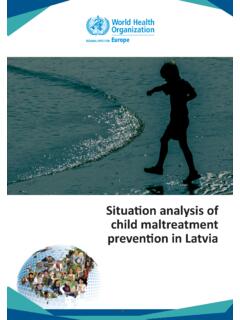Transcription of Situation analysis of out-of-school children in nine ...
1 Situation analysis of out-of-school children in Nine Southeast Asian Countries Situation analysis of . out-of-school children in Nine Southeast Asian Countries Published in 2017 by the United Nations Educational, Scientific and Cultural Organization, 7, place de Fontenoy, 75352 Paris 07 SP, France and UNESCO Bangkok Office UNESCO 2017. ISBN: 978-92-9223-576-5 (Print version). ISBN: 978-92-9223-577-2 (Electronic version). UNESCO 2016. This publication is available in Open Access under the Attribution-ShareAlike IGO (CC-BY-SA IGO). license ( ). By using the content of this publication, the users accept to be bound by the terms of use of the UNESCO Open Access Repository ( org/open-access/terms-use-ccbysa-en). The designations employed and the presentation of material throughout this publication do not imply the expression of any opinion whatsoever on the part of UNESCO concerning the legal status of any country, territory, city or area or of its authorities, or concerning the delimitation of its frontiers or boundaries.
2 The ideas and opinions expressed in this publication are those of the authors; they are not necessarily those of UNESCO and do not commit the Organization. Coordinators: Ichiro Miyazawa and Mary Anne Therese Manuson Design/Layout: Umaporn Tang-On / Warren Field Cover photo: UNESCO /S. Chaiyasook TH/C3/EISD/17/014-500. ii Table of Contents List of iv List of v Acronyms .. vi Executive x I 1. Research 1. 2. Scope and 2. II Social, Economic and Political 3. A. Geographical 3. B. Demographic 5. C. Socio-Cultural 6. D. Economic 10. E. Political 13. III Education Systems and 15. A. Education 15. B. Education 16. C. Barriers to 18. D. Education 19. E. Policies on Expanding Access for OOSC through Flexible 27. F. Financing Programmes for Disadvantaged children / Non-Formal 32.
3 IV Profile of out-of-school 35. A. National Definitions of 35. B. Who are the out-of-school children ?.. 37. V Pillars of Flexible Learning Strategies: Approaches from 77. 1. Adapt to the Circumstances of 78. 2. Promote Flexibility and Open 85. 3. Partnership between Government and NGOs/ Non-State 88. 4. Equivalency of 91. 5. Ease of 96. 6. Life Skills-based and Accelerated 99. 7. Recruit and Train Teachers/Facilitators from the 8. Monitoring and Evaluation VI iii List of Tables Table 1. Total Area per Country in Southeast Table 2. Types of Hazards per Southeast Asian Table 3. Population per Country in Southeast Table 4. HDI Rank and Value, and HDI Category of Selected Southeast Asian Countries: 2013 ..7. Table 5. Human Development Index in Southeast Asia: Table 6.
4 Gender Inequality Index in Southeast Table 7. Gross Domestic Product per Capita and GDP Growth: 10. Table 8. Labour Force and 12. Table 9. Rural and Urban Poverty Headcount Ratio at 13. Table 10. Duration of Basic Education in 9 Southeast Asian 15. Table 11. Gross Enrolment Rates (GER), Net Enrolment Rates (NER) and Adjusted Net Enrolment Rates (ANER) at the Primary Level: 2013 or Latest 16. Table 12. Gross Enrolment Rates (GER) and Net Enrolment Rates (NER) at the Lower Secondary Level: 2013 or Latest 17. Table 13. Government Expenditure on Education: 2012 or Latest 18. Table 14. Department of Education Budget, 33. Table 15. Definitions of OOSC in Several Southeast Asian 36. Table 16. Number of out-of-school children by Educational Level (2009).
5 42. Table 17. Primary School-age OOSC Rate by Sex, Cambodia: 43. Table 18. Primary School-Age OOSC Rate by Sex and Ethnic and Indigenous Group, Cambodia: 44. Table 19. Lower Secondary School-Age OOSC Rate by Sex and Urban-Rural Location, Cambodia: 2009 .. 44. Table 20. Number of OOSC Among Primary and Lower Secondary School-Age children , Cambodia (6-14 years): 45. Table 21. Reasons for Not Attending 46. Table 22. Percentage of Dropout Students by School Level and Income Quintile, Indonesia: 48. Table 23. Percentage of children Not Enrolled in Schools by School Level, Income Quintile, and Urban-Rural Location (2009).. 49. Table 24. Child Activity Status of children Aged 6-13 by Sex and Residence, Lao PDR: 2010. (in percent).
6 53. Table 25. Proportion of out-of-school children and Youth by Region, Age Group and Sex, Philippines: 60. Table 25. Proportion of out-of-school children and Youth by region, age group and sex, Philippines: 61. Table 26. Proportion of out-of-school children and Youth by Reason for Not Attending School, Philippines: 61. Table 27. Philippine Population Estimates for CWDs using WHO Formulation: 64. Table 28. Percentage of children Not Studying By Age and Income Level, Thailand: 66. Table 29. Number of Students with Special Needs Access to Inclusive Education, 66. Table 30. children Who Have Never Attended School by Age Group, Timor-Leste: 2004 and 2010. (in percent).. 68. iv Table 31. children with Disabilities Aged 6-14, Timor-Leste: 71.
7 Table 32. OOSC Rates in Primary and Lower Secondary Education by Age, Sex, Vietnam: 72. Table 33. out-of-school children in Primary Education by Location and Ethnicity, Vietnam: 73. Table 34. OOSC in Lower Secondary Education by Location and Ethnicity, Vietnam: 74. Table 35. out-of-school children in Primary Education by Disability, Vietnam: 74. Table 36. OOSC in Lower Secondary Education by Disability, Vietnam: 74. Table 37. out-of-school children Rate by Migration, Vietnam: 75. Table 38. Typology of out-of-school children , Vietnam: 75. Table 39. Philippines' Alternative Learning System's Flexible Delivery of 86. Table 40. Learning Courses in the Curriculum of Government-Managed NFE 102. List of Figures Figure 1. Research Figure 2.
8 Gini Index and Disparities in Income/ Expenditure between Richest and Poorest 20%: Latest Available Figure 3. Years of Free and Compulsory Education in Southeast Figure 4. Number of OOSC in Southeast 37. Figure 5. Gender Difference in OOSC Rates in Southeast 39. Figure 6. OOSC Rate by Sex: 2008-2012 (in percent).. 43. Figure 7. Rate of OOSC of Primary School-Age children , Indonesia: Figure 8. Rate of OOSC of Lower Secondary School-Age children , Indonesia: Figure 9. Rate of OOSC of Primary School Age by Sex, Lao PDR: 2002-2013 (in percent)..51. Figure 10. Rate of OOSC of Lower Secondary School Age by Sex, Lao PDR: 2002-2013 (in percent).. 52. Figure 11. Rate of OOSC of Primary School Age, Malaysia: 1999-2003 (in percent).. 55.
9 Figure 12. Number and Rate of OOSC of Secondary School Age in Malaysia: 56. Figure 13. Rate of OOSC of Primary School Age, Thailand: 2006-2009 (in percent).. 65. Figure 14. Rate of OOSC of Lower Secondary School Age, Thailand: 2006-2007, 2009 (in percent).. 65. Figure 15. Rate of OOSC of Primary School-Age children , Timor-Leste: 2008-2011 (in percent).. 68. Figure 16. Rate of OOSC of Lower Secondary School-Age children , Timor-Leste: 2008-2011. (in percent).. 69. Figure 17. Working children Aged 10-14 Who Currently Attend School by Urban/Rural Location, Timor-Leste: 2010 (in percent).. 71. v Acronyms A&E Accreditation and Equivalency A/L Accelerated Learning ADB Asian Development Bank ALC Alternative Learning Center ALE Alternative Learning and Education ALIVE Arabic Language and Islamic Values ALS Alternative Learning System ALS-DAP Alternative Learning System for Differently-Abled Persons ANER Adjusted Net Enrolment Rate APIS Annual Poverty Indicators Survey ARH Adolescent Reproductive Health ARMM Autonomous Region in Muslim Mindanao ASEAN Association of Southeast Asian Nations BALS Bureau of Alternative Learning Systems BDA Border Areas Development Association BEAM Basic Education Assistance for Mindanao BEIS Basic Education Information System BIFF Bangsamoro Islamic Freedom Fighters BLP Basic Literacy
10 Program BMWEC Burmese Migrant Workers' Education Committee BRAC Bangladesh Rural Advancement Committee CAR Cordillera Administrative Region CESR Comprehensive Education Sector Review CIA Central Intelligence Agency CLC Community Learning Center CSES Cambodia Socio-Economic Survey CVCD Cambodian Volunteers for Community Development DBE Department of Basic Education DepEd Department of Education DEPT Department of Educational Planning and Training DHS Demographic Health Survey DNFE Department of Non-Formal Education DoE Department of Education DoE District Education Office DSW Department of Social Welfare DSWD Department of Social Welfare and Development vi DTC Dynamic Teen Company ECED Early Childhood Education and Development EduStat Education Statistics EFA Education for All EP Equivalency Program EPDC Education Policy and Data Center ESP Education Strategic Plan EXCEL Extended and Continuous Education and Learning FLEMMS Functional Literacy.
